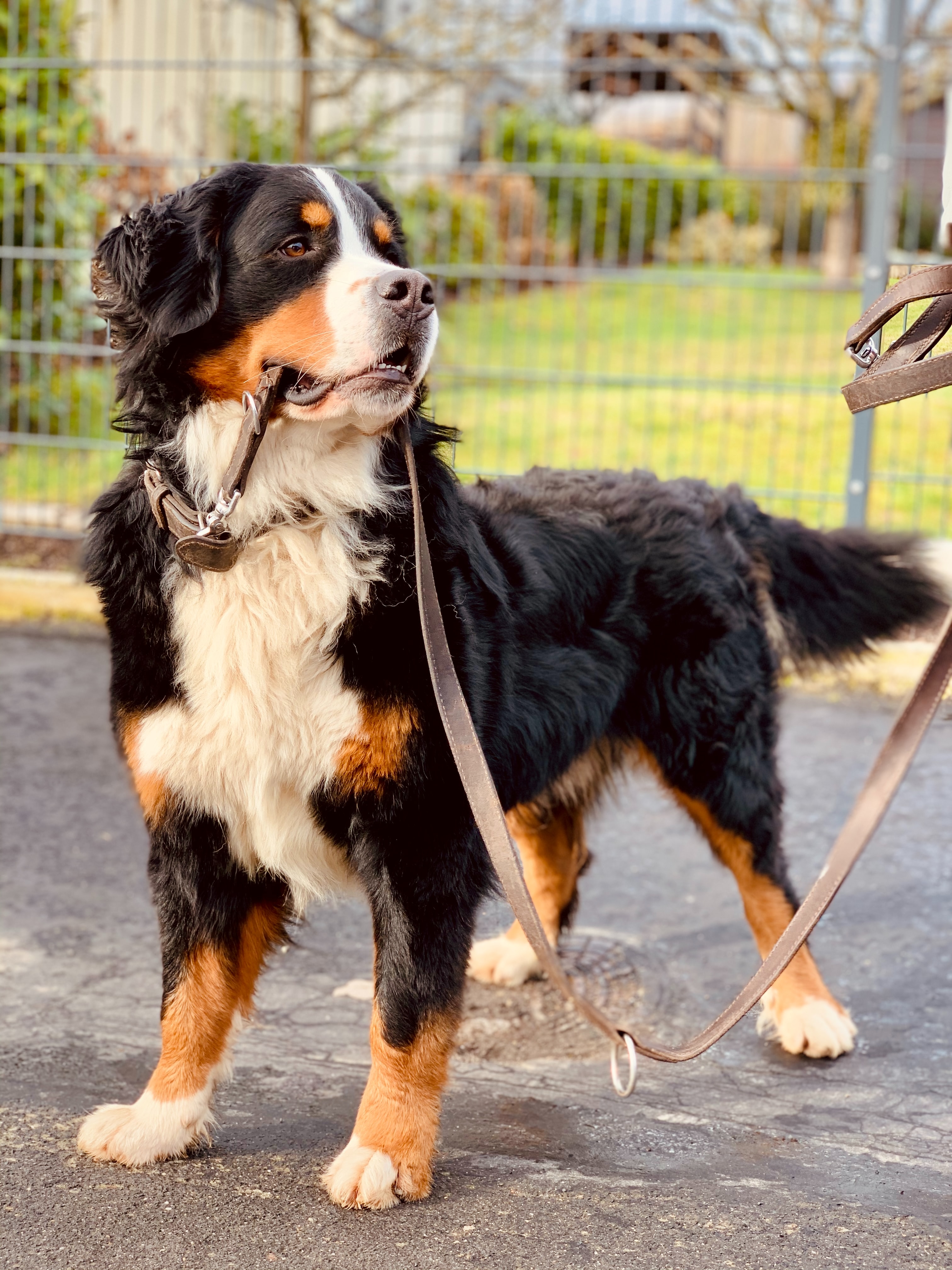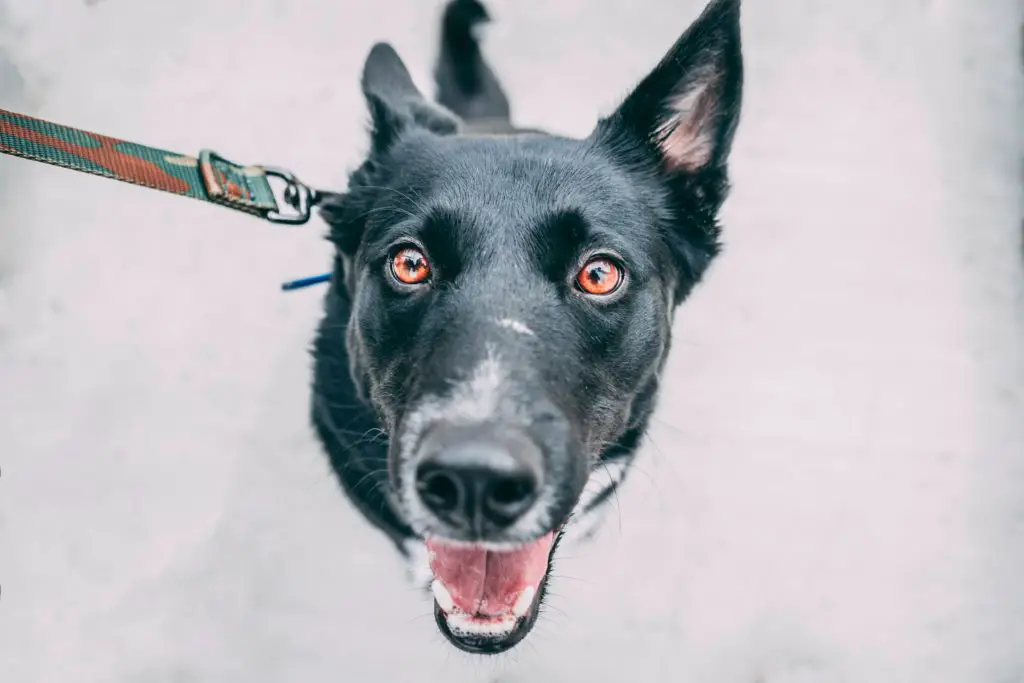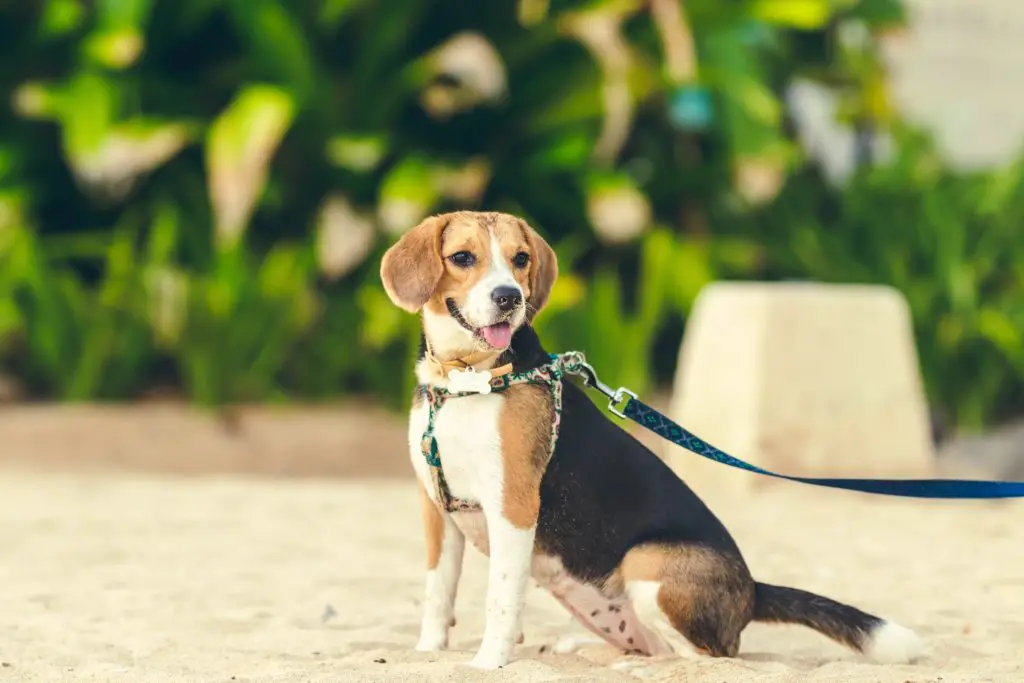Your dog’s daily walk has become part of their routine. It provides them with exercise, the opportunity to eliminate, and the best part (for a dog) is taking in the new smells of the world around them.
New dog owners might not know there are rules of how to walk your dog. The rules set up for walking dogs keep people and animals safe. The best part is it allows dog owners to bring their dogs to parks and other outdoor recreation areas.
Often areas that are marked “dog friendly” are done because people follow the written and unwritten rules of how to walk your dog. When dog owners follow the basic dog walking etiquette is a win-win for both owners and the dogs.
In this article, Rules of How to Walk Your Dog, we will look closely at six dog walking rules. Including using the right equipment for walking, the importance of picking up dog poop, how to keep your dog close to you, being respectful, and being prepared for all kinds of weather.
Related Articles:
- A Review of the 5 Best Slow Feed Dog Bowls
- A Review of the 5 Best Retractable Dog Leashes
- A Review of the 5 Best High Fiber Dog Foods For Anal Gland Problems
- The 5 Pawsitively Best Dog Nail Grinders

6 Universal Rules of How to Walk Your Dog
- Use a Leash (unless designated off-leash area) – maximum length 6’
- Pick Up & Dispose of Dog Feces
- Maintain Control Your Dog
- Be Alert and Respectful
- Do Not Trespass
- Be Prepared for Weather
Following these basic rules of walking etiquette and you will earn the respect of fellow dog walkers.
Rules of How to Walk Your Dog: The Right Equipment
What does the right equipment have to do with the rules of how to walk your dog? It’s all about controlling your canine companion when you are out and about.
Before you set out for a walk, be sure your dog has a well-fitted collar or a walking harness and leash. It is best to use a leash that is comfortable for you and easy to handle.
What length leash is ideal for walking? Purchase a 4’ – 6’ standard leash. Nylon, biomethane, and leather leashes all work well. The diameter of your leash can be based on the size of your dog; small to medium dogs could use a 3/8” – 5/8” leash diameter. Medium to large dogs might use a 5/8” – 1” leash diameter.
Leashes with special features may be helpful if it allows you to have better control of your dog. Special features could include an additional handle halfway down the leash. Another special feature is an adjustable leash that usually allows for the leash to clip in half shortening the length.
Related Articles:
- A Review of the Top 5 Best Brooms For Dog Hair
- A Review of the 5 Best Peanut Butters for Dogs
- A Review of the 4 Best Dog Shampoos for Itchy Skin
- A Review of the 5 Best Dog Brushes For Short Hair
- A Review of the 6 Best Dog Harnesses for Hiking
In general, avoid using a retractable leash for walking your dog. Retractable leashes have been known to be hard to handle and break when sudden force is applied (by even the smallest dog). Common injuries associated with retractable leashes are burns, cuts, and even limb amputations.
Rule #1 of Rules of How to Walk Your Dog is to use a leash that is 6 ft or less. When you are equipped with the right equipment for your dog, it makes it easy to respect the area around you.
Rules of How to Walk Your Dog: Pick Up Your Dog Feces
Picking up poop is not a pleasant topic, however, it is included as one of the most important dog walking rules. When you own a dog, you carry poop bags! Store poop bags in your coat pocket, your purse, in the vehicle, stuffed in your backpack, and even clipped to your dog’s leash.
So what is the big deal about picking up your dog feces? Besides the obvious of not wanting to step in it, poop pollutes the ground. It is not something you think about, but your dog’s poop could actually do damage to the soil and water around it.
Outdoor spaces like city parks, state parks, and neighborhoods all have something in common – one of the rules of how to walk your dog is to pick up their poop and dispose of it.
Dog feces contains micro-organisms that are harmful to humans. The pathogens found in dog feces leak into the soil and water negatively impacting the surrounding wildlife and plant life.
Related Articles:
- A Review Of The Top 5 Best Carpet Cleaner Solutions for Dog Urine
- A Review Of The Top Best Silent Dog Whistles
- A Review Of the Top 5 Best Artificial Grasses For Dog Potty
- A Review of the Top 5 Best Dog Carrier Backpacks
- A Review of the 5 Best Dog Frisbees
It gets a bit worse; dog poop has the potential to carry intestinal parasites such as hookworm, tapeworms, and whipworms. Many of these parasites are undetectable without the use of a microscope. Your dog can easily pick them up just by smelling the poop left from another infected dog.
Waste left by dogs can also contain bacteria such as salmonella. Viruses can also be in a dog’s poop. One particular virus that can be fatal to new puppies is parvovirus.
Rule #2 of Rules of How to Walk Your Dog; pick up your dog’s poop right away and properly dispose of it.

Rules of How to Walk Your Dog: Maintain Control of your Dog
It is important that you know how to control your dog. Practice learning how to walk your dog on a leash at home before setting out to walk at a nearby park.
Do you have a new dog or puppy? Dogs that grow up to be confident in new settings have had owners that focus on early socialization. Exposing your dog to new sights, sounds and smells make walking your dog an enjoyable experience for all.
Related Articles:
- How to Stop a Dog from Pooping in the House at Night
- How to Potty Train an Older Dog in an Apartment
- How to Grind Your Dog’s Nails
- How to Get a Dog To Take a Pill
- Learn The Secrets Of How to Clip a Dog’s Nails Safely!
Are you looking for an early socialization checklist? How to Train Your Dog to Be Social includes a list of six areas that you and your dog can experience together.
A well adjusted dog is less fearful, less anxious, and less likely to be aggressive. You will be able to maintain control of your dog that is well adjusted to sights and sounds in your world.
By maintaining control of your dog, you can help your dog not lunge and bark while out on a walk. One way to maintain control is calling your dog to sit in front of you while a potential threat passes you both. (A potential threat to your dog could be another dog, children, people using a walker, or someone riding a bicycle).
Remember to reach out for assistance if you are unsure if you can control your dog. Professional trainers will be happy to work with you and your dog.
Rule #3 of Rules of How to Walk Your Dog; practice walking with your dog on a leash and be confident that you know how to maintain control of your dog.
Related Articles:
- A Review of the 5 Best Waterless Shampoos for Dogs
- A Review Of The Top 5 Best Halloween Costumes for Dogs
- How to Stop a Dog from Pooping in the House at Night
- How to Potty Train an Older Dog in an Apartment
- How to Grind Your Dog’s Nails
Rules of How to Walk Your Dog: Be Alert and Respectful
When out on a walk with your dog, always be alert to your surroundings. Pay attention to wildlife and people around you. Walking is a wonderful time to bond with your dog.
Your dog will know when you are distracted by taking pictures, talking on the phone, or chatting with a friend. For some dogs they know this is the moment to check out something off-trail.
This is a one of the easiest rules of how to walk your dog, simply pay attention to your dog and what is happening around both of you. You likely know what distracts your dog. Common distractions are other dogs, squirrels, people on bikes, people that love dogs, a body of water or even discarded food on the pathway.
Related Articles:
- How to Obedience Train Your Dog
- How to Leash Train Your Dog
- How to Get Rid of Dog Warts at Home
- How to Housebreak or Potty Train Your Puppy
- How to Clicker Train Your Dog
If your dog is new to distractions, call your dog and position them in a sit in front of you. Establish eye contact and if needed give them consecutive treats. Once the distraction passes, stop treating and resume your walk. You are letting your dog know that when they see a distraction, turn to you, because good things happen (treats) when they look at you.
When you and your dog are walking together as a team, you know they will not be disturbing the wildlife, other people, or other dogs. This simple walking etiquette is showing respect to others that might be sharing the road, trail, or path with you and your dog.
Rule #4 of Rules of How to Walk Your Dog; Pay attention to your dog while you are out walking together. Let your dog know you can handle potential distractions together and respectfully.
Related Articles:
- How to Train Your Dog with Positive Reinforcement
- How to Train Your Dog to be Social
- A Review Of The Top 5 Best Tactical Dog Harnesses
- A Review of the 6 Best Dog Harnesses for Hiking
- How to Play with Your Dog: 7 Fun Dog Games
Rules of How to Walk Your Dog: Do Not Trespass
This simple rule seems obvious, but dog owners sometimes need a good reminder. Private property is not meant for the public to wander and walk their dogs. Walk where you know you and your dog are welcome.
When visiting a new area check out BringFido.com for dog friendly areas to walk and exercise your dog. It may require a bit of homework before you walk in a new area, but it will save you the hassle of walking on someone else’s private property.
If you are a hiker, check out Alltrails.com for the location you will be hiking and visiting. If the area is dog friendly, it will state it in the trail description. Remember Rule #2 – carry poop bags and remove your dog’s feces whenever you are out on a trail.
Rule #5 of Rules of How to Walk Your Dog; Enjoy walking in dog-friendly areas, not on private property.
Related Articles:
- How to Train a Dog to Run Next to a Bicycle
- How to Teach an Older Dog New Tricks
- How to Train a Deaf Dog
- The Top 12 Fun and Easy Dog Tricks

Rules of How to Walk Your Dog: Be Prepared for Weather
A responsible dog owner desires to take the best of care of their canine companion, which often requires adapting to the weather. The two main areas to check in hot weather are the heat of the surface where you walk and making sure your dog does not overheat.
Protect your dog’s paws during the hot summer by avoiding asphalt. Burns on a dog’s pads are both painful and could quickly become serious. Grassy areas, wooded trails or paths that are in the shade are great choices during the heat.
When walking your dog during the summer months, be sure your dog can stay hydrated. Puppies and senior dogs are the most likely to overheat during the heat.
Related Articles:
- How to Cook Marrow Bones for Dogs
- A Review Of The Top Five Best Foods for Hiding Dog Pills In
- A Review of the Top 5 Best Dog Bones For Aggressive Chewers
- A Review Of The Top 5 Best Bone Broths for Dogs
- A Review Of The Top 5 Best Dog Whistles
Cold temperatures in the winter and also be a potential hazard. Protect your dog’s paws with protective paw salve or paw boots designed for winter walking. Dogs with short coats will get chilled quickly, consider a jacket or sweater designed to protect your dog from the chilly wind and temperatures.
Rule #6 of Rules of How to Walk Your Dog; be prepared and careful when walking your dog in the hot summer and freezing temperatures in the winter. Protect the pads of their feet and make sure they do not get overheated or chilled.
Rules of How to Walk Your Dog
By following dog walking etiquette, you will keep your dog safe, respect others, respect other dogs, and the wildlife. The best part is the more united dog owners are with following the rules of how to walk your dog, the more places everyone can bring their dogs.
Remember it brings dog owners great joy to have their dogs join them in daily walks.
Relevant Articles:
- Ultimate Guide: How To Take Care Of A Puppy
- Ultimate Guide: How To Take Care Of A Dog
- Ultimate Guide: How To Take Care Of A Senior Dog
- The Benefits of Owning a Dog
- Top 12 Tips for First Time Dog Owners
- How to Train a Dog
Please read our Legal Disclaimer

